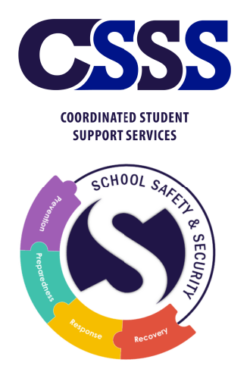Bullying Program Development
 An effective anti-bullying program addresses the unique needs of a particular school, involves a school-wide approach that engages all affected groups (students, staff, parents, and community), develops social and emotional competencies, provides skills to prevent or intervene in bullying situations, and responds to bullying behaviors consistently and appropriately.
An effective anti-bullying program addresses the unique needs of a particular school, involves a school-wide approach that engages all affected groups (students, staff, parents, and community), develops social and emotional competencies, provides skills to prevent or intervene in bullying situations, and responds to bullying behaviors consistently and appropriately.
Decisions regarding developing a bullying prevention program or plan may vary, from changing supervision assignments to adopting a curriculum, depending on each school or district’s unique needs. The following ideas may be considered in determining the most effective program or plan.
- Conduct a review and alignment of current policies and prevention programs
- Collect, organize, and interpret bullying behavior data
- Determine district needs and goals related to a safe and secure learning environment
- Identify effective programs, curriculum, and/or strategies to develop pro-social behaviors and address bullying behaviors
- Recognize and celebrate successes
- Review program and sustain effort over time
- Ensure the program is inclusive of all students
Education/Training Plan
- Training and instruction of all groups (certified and non-certified staff, students, parents/community, volunteers, etc.) will support the development of a safe and secure environment.
- A comprehensive training/education plan is ongoing based on the school’s needs. It includes developing awareness, skill-building (prevention and intervention strategies), and monitoring progress.
- The education plan for students develops sequentially through all grade levels. It provides helpful resources for bystanders, targets of bullying behaviors, and engaging in the use of bullying behaviors.
Components of a Quality Bullying Prevention Program
Adapted from Limber, Susan, P. Ph.D. (2005) “Bully Prevention and Intervention in a Post-Columbine Era” Power and Empowerment Iowa Governor’s Conference on Bullying and Harassment, January 2005
- Focus on the entire school environment; the comprehensive school-wide effort to identify and address problem areas and effectively intervene in bullying behaviors; change student and staff ‘norms’, i.e., behavior expectations.
- Data-informed decisions. Students, staff, and parents participate in surveys or other methods of collecting experiences and perceptions of school climate and behaviors; program components and implementation are determined or modified after data analysis.
- All staff training awareness and skills training in bullying prevention and intervention includes administrators, all teachers, health professionals, support staff, para-educators, volunteers, substitute and student teachers, etc.
- A bullying policy is developed and enforced. Rules guide student behaviors, including children who bully and who are bystanders. Consequences and skills training are consistently used to address bullying behaviors.
- Prevention efforts are continued over time, new staff are trained, ongoing curriculum/instruction is provided across grade levels, regular communication with parents/community is provided, and data is collected and reviewed annually.
- A bullying policy is developed and enforced. Rules guide student behaviors, including children who bully and who are bystanders. Consequences and skills training are consistently used to address bullying behaviors.
- Direct and intentional instruction on bullying prevention. Regular (weekly) time is set aside for students and staff to discuss bullying prevention and peer relations; resources (videos, literature, skills lessons, etc.) are available and used to develop awareness and competence in responding to bullying; bullying prevention information is integrated across the curriculum and shared with parents.






